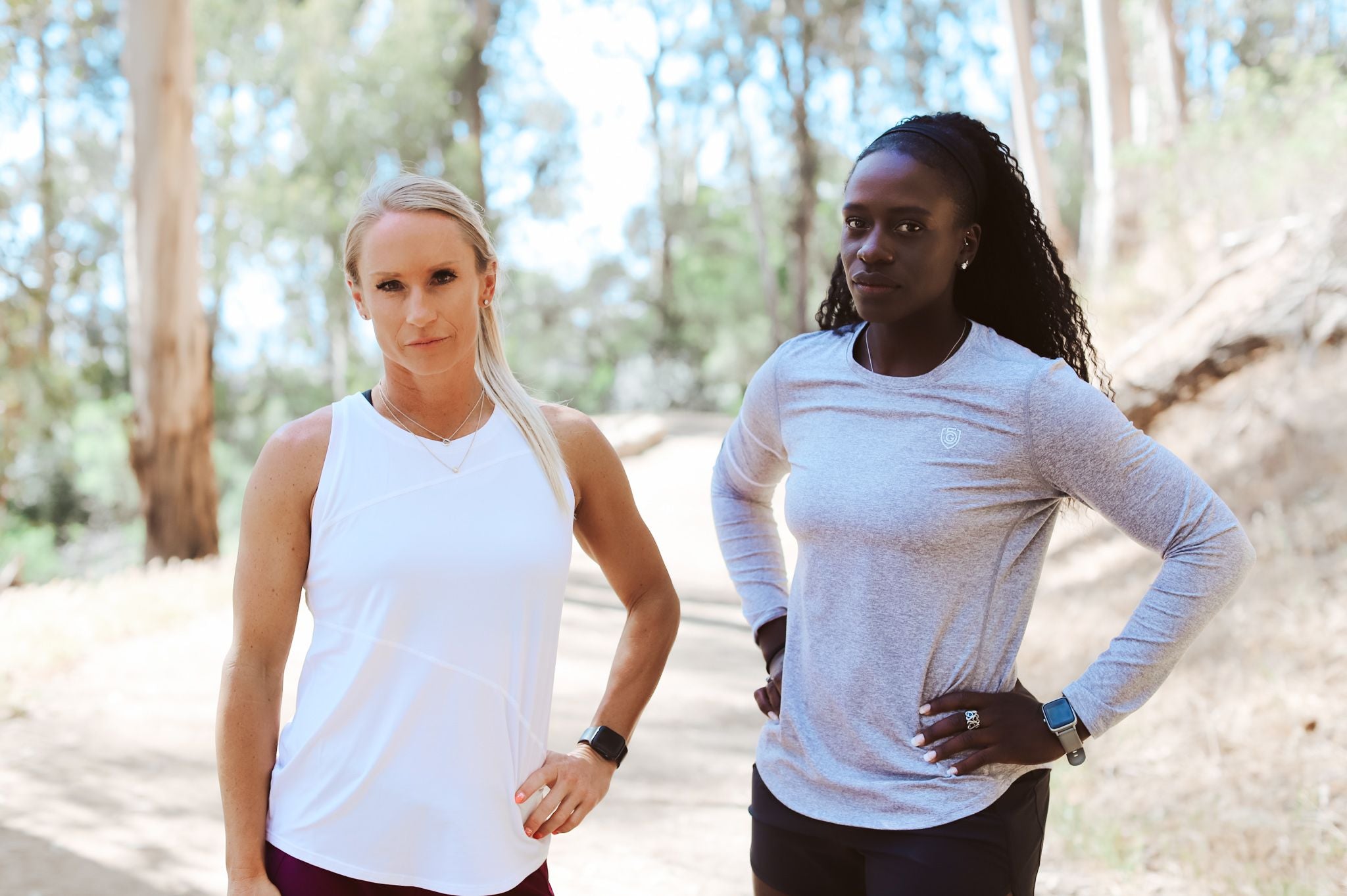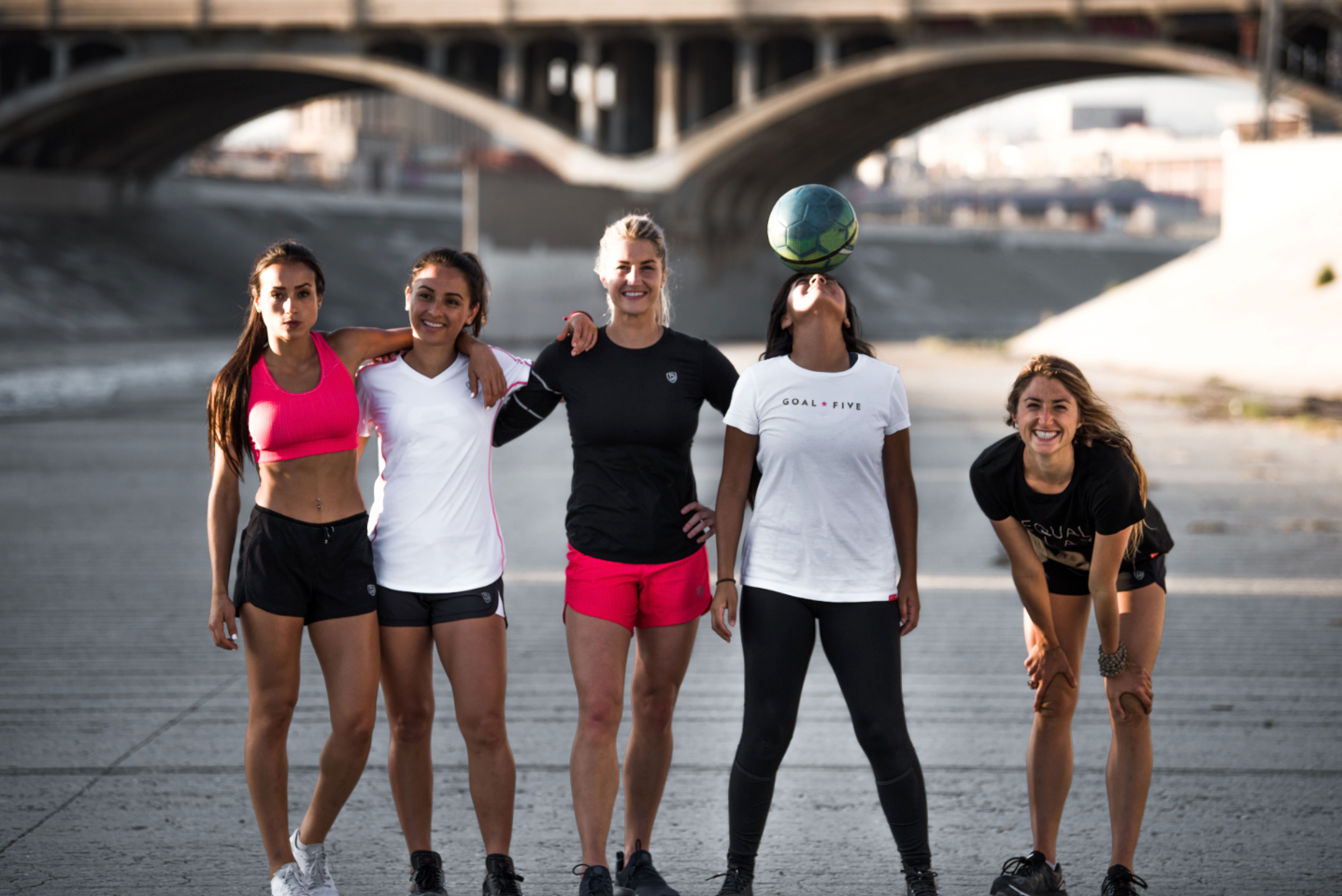The History of Gender Inequality in Sports
If you’re reading this, you might’ve grown up in an era when women and girls in sports was a given. Whether you participated in a sport growing up or not, you probably had some athletic opportunities. And if you did play sports, we bet you had more than one influential female athlete to look up to.
Things weren’t always that way. Although discrimination against women in sports still happens, it can be hard to imagine the deep adversity that females in sports history had to overcome in the past. We can’t take this for granted.
When we look back at how things have changed since the beginning of women’s rights to play sports, we have to appreciate the women who changed everything.
Inequality in Ancient Sports
So, exactly when were women allowed to play sports? Women and girls in sports history may date back further than you think.
In fact, Homer’s Odyssey depicts women playing ball together. Ancient Greek festivals sometimes included women in foot races, and women could win equestrian events at the Olympics. In Spartan culture, it wasn’t unusual for women to have athletic opportunities in discus, javelin-throwing, and even wrestling.
There have been other traditions honoring women’s athletic abilities in Native American and indigenous cultures as well. For example, Laamb is a form of Senegalese wrestling traditionally performed by the Serer people and once included women, until women were banned in the 20th century.
Gender Inequality in Sports: Victorian Era
Fast-forward to Victorian Western Europe, a strange time for gender in sport history. Society expected women to be fragile and helpless. Sexist superstitions abounded, purporting that women’s bodies were too delicate to withstand strenuous physical activity. It was common to think that athletics might deplete so much of a woman’s energy she’d end up childless or bearing frail children.
Yet, upper-class women began playing tennis and golf at country clubs, which gradually made it more socially acceptable for women to play sports. The rise of bicycles in the 1890s and of Pedestrianism (competitive walking) in the 19th century appealed to working-class women.
Gender Inequality in Sports: 20th Century
After the turn of the century, women started to shake things up in the world of sports. The 20th-century history of female athletes was a gradual and difficult transition since many people considered women’s inclusion in sports an intrusion into a male space . Thus, for much of the century, society viewed athletic women as unnaturally masculine or assumed them to be gay as they were behaving counter to traditional gender expectations and feminine beauty standards.
1900s
Eventually, athletic clubs for women appeared beginning in the late 1800s and into the 1900s. The 1900 Olympics saw 22 women compete in equestrian events, croquet, sailing, and women-only events like tennis and lawn golf.
1920s
By 1920, 22% of American universities had athletic programs for women.
In 1921, Alice Milliat was tired of waiting for more opportunities in the Olympics and founded Fédération Sportive Féminine Internationale. In 1922, the FSFI held its first Women’s Olympic Games in Paris, featuring more intense events such as shotput and a 1000-meter race.
However, this angered the International Olympic Committee (IOC) and the International Association of Athletic Federations (IAAF). In 1926, the IOC agreed to have track-and-field events for women in exchange for the FSFI observing IAAF rules.
It didn’t last long. People were so shocked to see women exhausted after running the 800-meter race that the Olympics banned the event until 1960.
1930s
This resistance against women exerting themselves in sports led to most universities dropping their athletic programs, holding less strenuous fitness classes and game days instead.
Throughout the ‘30s, the percentage of women at the Olympics slightly declined, but Mildred “Babe” Didrikson Zaharias and Stanisława Walasiewicz “Stella Walsh” both won gold at the 1932 Olympics in Los Angeles.
The same year, Tidye Pickett and Louise Stokes were the first Black women at the Olympics, though they were met with segregation and mistreatment.
1940s
During WWII, women got their first professional sports league, the All American Girls Professional Baseball League.
1960s
As the U.S. waged its own geopolitical competition against the Soviet Union, women in sports gained some ground in response to the Soviet Union’s impressive female athletes.
1964 marked the passage of the Civil Rights Act to prohibit discrimination against people based on race, national origin, color, or religion, but barely mentioned gender identity or sex discrimination. Many colleges and universities in the U.S. openly persisted in their sex discrimination.
During the ‘60s, researchers finally showed that women were fully capable of being athletes without exhibiting health or reproductive complications.
Nonetheless, some women who performed “too well” were viewed suspiciously and their sex was put into question. Starting in 1968, women competing in the Olympics had to undergo gender verification exams, a practice that would last over 30 years.
In 1967, Kathrine Switzer defiantly participated in the men-only Boston Marathon by disguising her first name in her registration.
1970s
When Title IX of the Education Act of 1972 passed, just 2% of college athletic budgets were accessible to female athletes, and women’s athletic scholarships barely existed. There were less than 30,000 women collegiate athletes in the U.S.
The direct impact of Title IX nationally and indirect impact abroad precipitated a huge shift in the prevalence of women in sports globally.
Tennis legend Billie Jean King wasted no time battling for equality in sports. In 1973, she beat self-described “male chauvinist pig” Bobby Riggs in the historic Battle of the Sexes match. That same year, she founded the Women’s Tennis Association, fought for equal tournament prize money, and threatened to boycott the U.S Open in a bid for equal pay.
When 1976 came along, many institutions still weren’t taking Title IX seriously and ignored its mandate for gender equality in sports at federally-funded schools. The women’s rowing team at Yale staged a protest over a lack of adequate shower facilities. News of the protest made it to the New York Times, and it took just two weeks before the women’s rowing team had new locker rooms and the legislation had newfound respect.
By 1978, Title IX compliance officially became mandatory, and the number of girls in high school sports was six times greater than in 1970.
1980s
After 1980, the percentage of women in the Summer Olympics grew more steadily than ever before, reaching 26% in 1988.
The ‘80s was also a revolutionary decade for Black women like Florence Griffith Joyner, who transcended their respective sports to become cultural icons and inspire girls everywhere.
2000s
Between 1972 and 2001, female players’ participation in sports at the college level had increased from 15% to 43%, but women still made up less than 15% of interscholastic athletic directors.
In 2002-03, the number of American girls playing high school sports had shot to 2.8 million, up from 295,000 before Title IX.
Venus Williams was part of the 2007 push to get Wimbledon to award equal prize money to male and female players. When she went on to win her fourth Wimbledon tournament, Williams herself received the same sum of prize money as the male winner, Roger Federer.
In 2008, women ski jumpers sued for inclusion in the 2010 Olympics.
By the end of the decade, 42% of athletes in the Summer Olympics were women.
2010s
The London Olympics in 2012 represented a major milestone where 44.3% of the athletes were female.
Still, research from 2012 and 2015 reflected that media underrepresentation, stereotypes, and the socialization of girls can deter them from participating in sports.
In 2017, the U.S Women’s national hockey team threatened a boycott of the world championships, risking their careers for fair pay.
Ada Hegerberg, the first woman to win the Ballon d’Or, parted ways with the Norwegian National soccer team in 2017 and missed the Women’s World Cup to protest her country’s unequal treatment of women’s soccer.
The following year, the Committee for Equity in Women’s Surfing achieved equal prize money and gender inclusion from the World Surf League.
2020s
2020 saw the women of the WNBA reach an agreement with the league for adequate pay with better benefits and accommodations.
According to the IOC, women comprised 45% of athletes at the 2022 Beijing Olympics, the closest the games have ever been to true gender equality.
In a landmark agreement this year, the U.S. Soccer Federation reached a $24 million settlement following an unequal pay lawsuit. U.S. Soccer will now pay men and women equally.
Although women athletes generally experience greater equality now than ever in history, there’s still gender inequality in sports. 70% of female sports leaders blame the lack of media coverage of women’s sports for the remaining gap between boys’ and girls’ participation in sports.
What’s the Goal for Sports Equality in the 21st Century?
The fight isn’t over. There is still sex discrimination when it comes to men’s and women’s pay, marketing, promotion, corporate sponsorships, and treatment in sports. Yes, we’ve made a lot of progress, but there is more work to do towards achieving equality in sports.
We can look to the influential women in sports who have changed the game and challenged the status quo to bring women’s sports to where they are today for inspiration. But while we long to see more women in power in sports, it doesn’t necessarily require power, fame, or status to make a change.
When was the greatest turning point for women’s sports?
We’ve certainly seen a lot happen for women in sports since the turn of the 20th century. What was the most important moment since then in your eyes, and why? Let us know on Instagram @goalfive.
Then, check out our gender equality advocacy to learn how we strive to help make the 21st century an even better one for women in sports.




Leave a comment
This site is protected by hCaptcha and the hCaptcha Privacy Policy and Terms of Service apply.